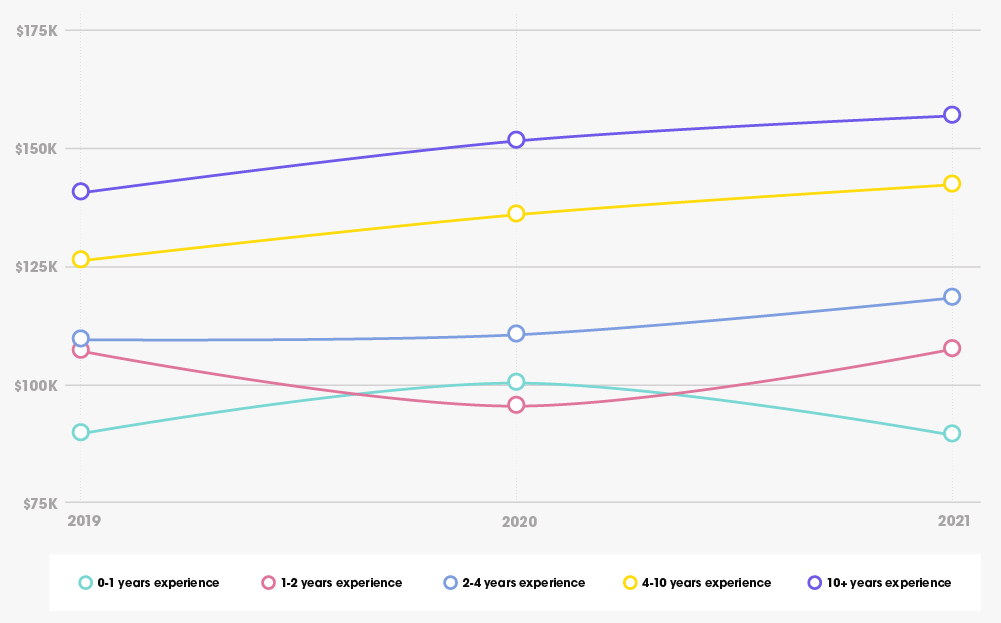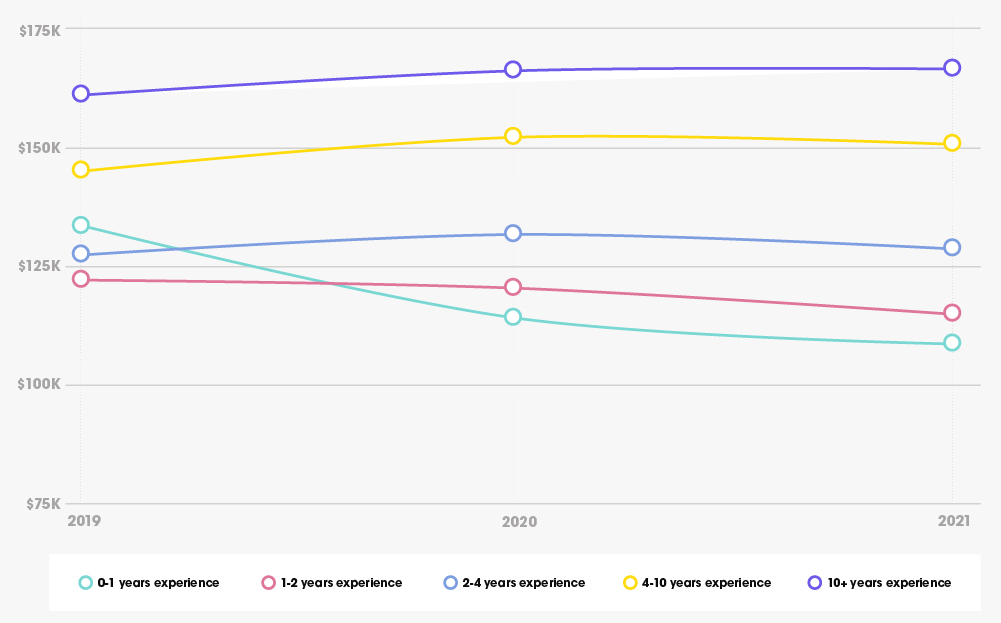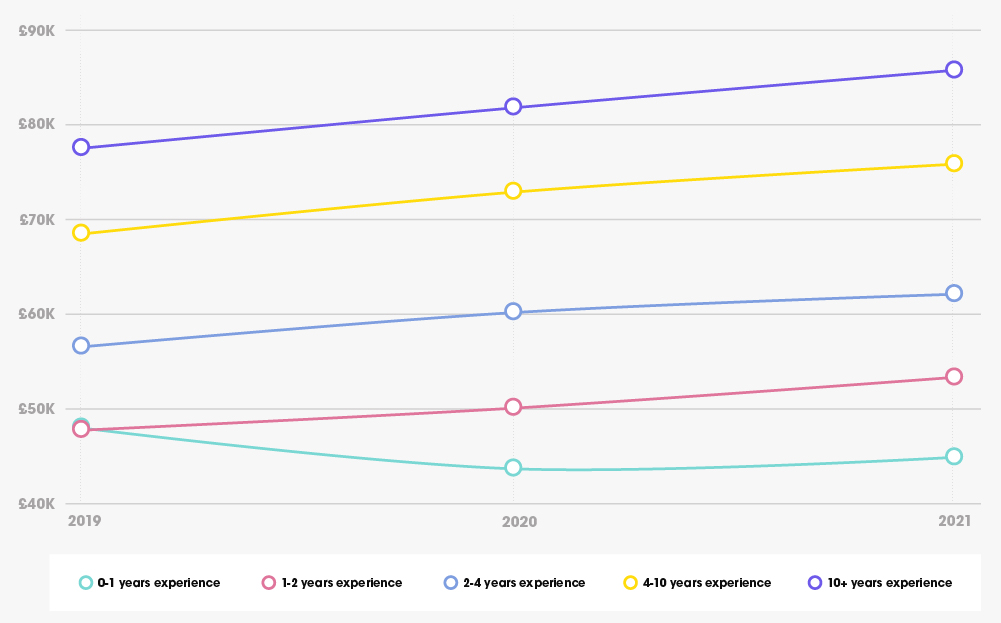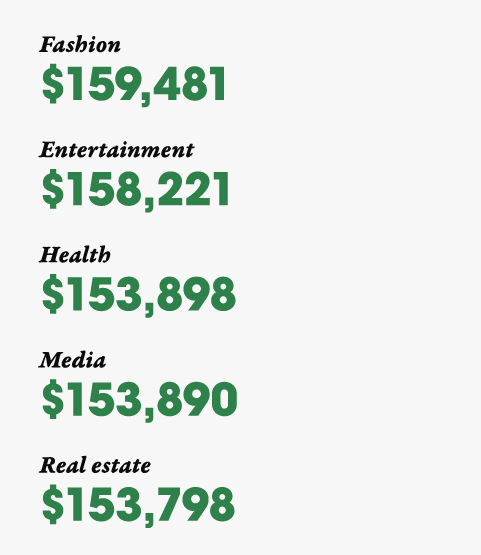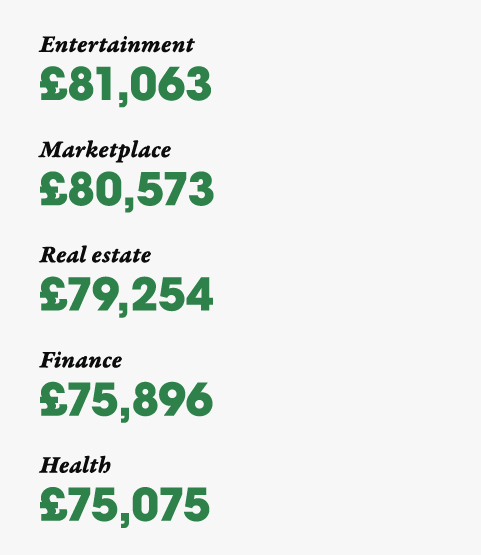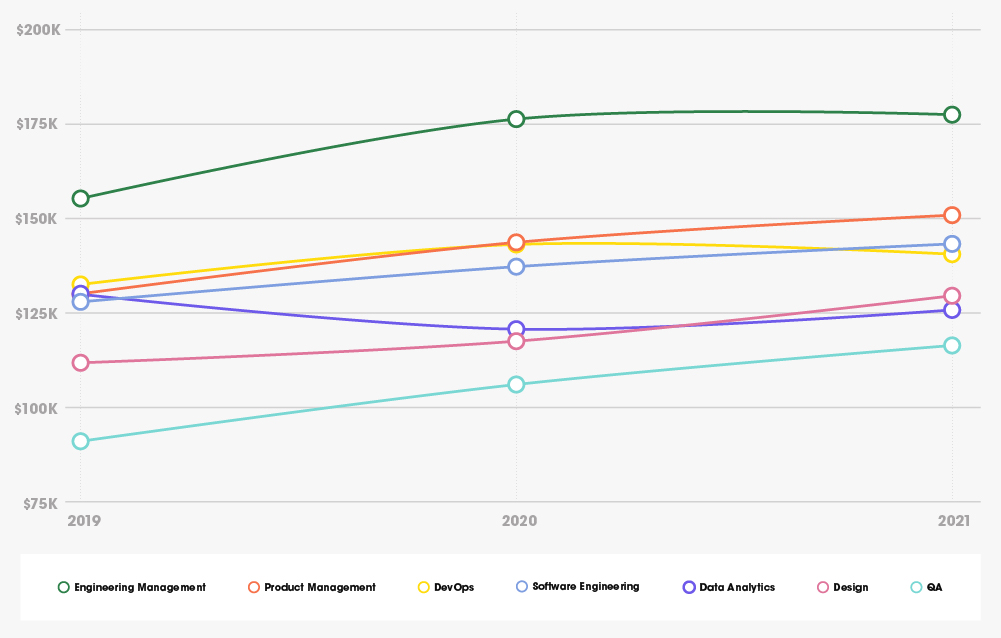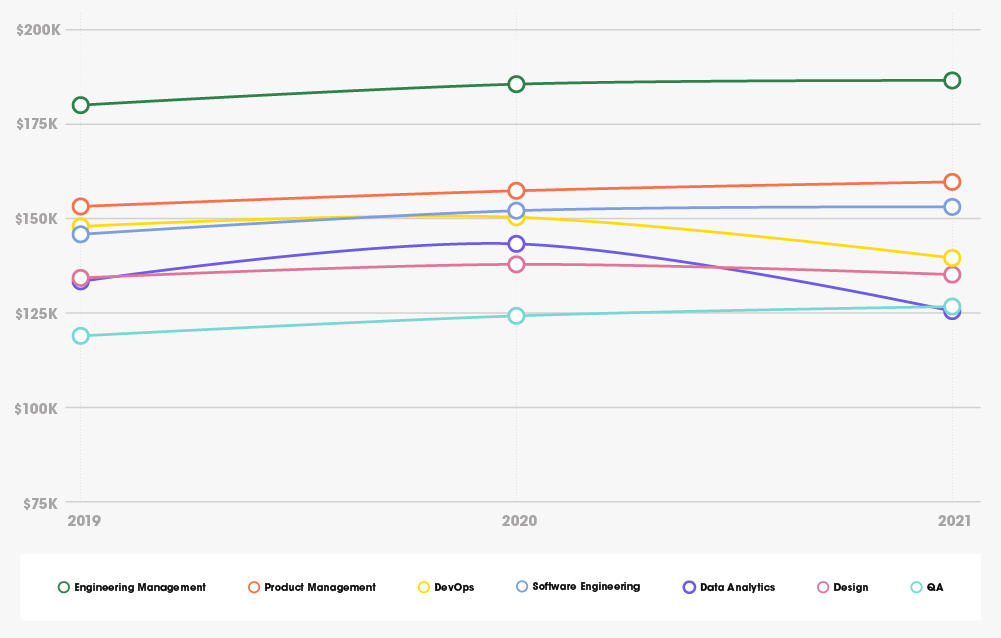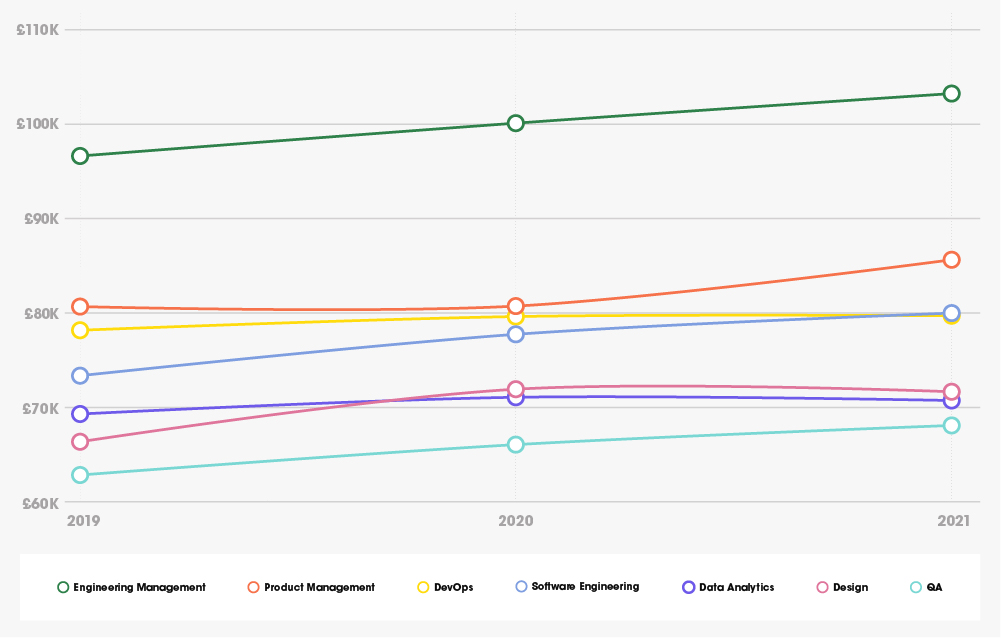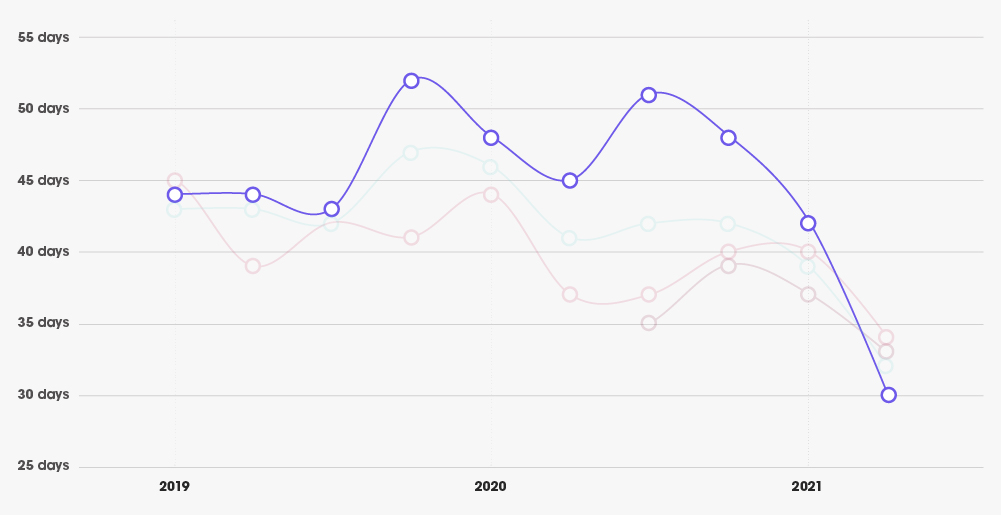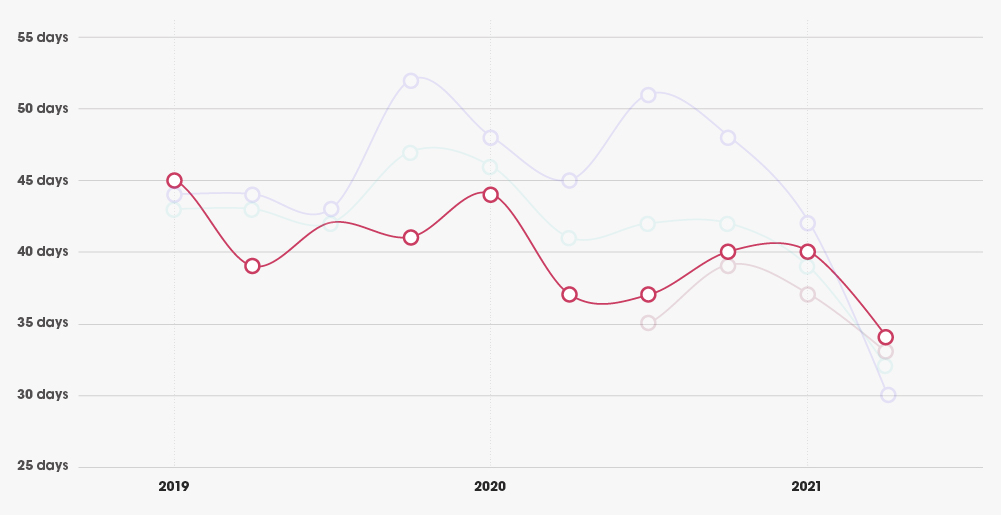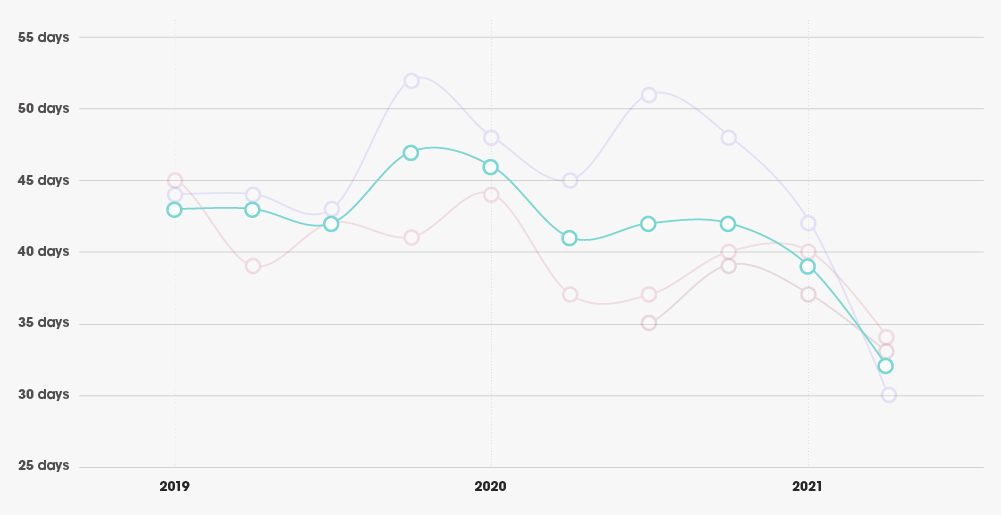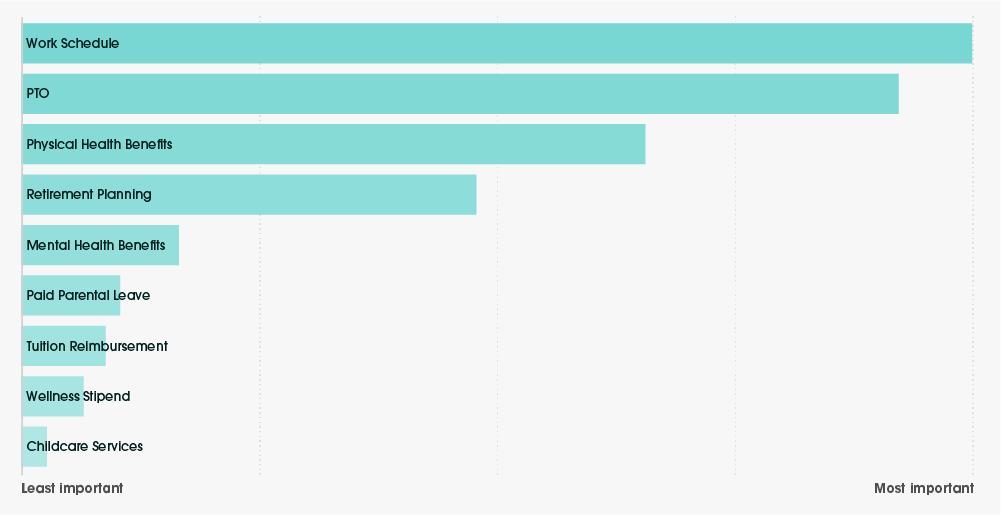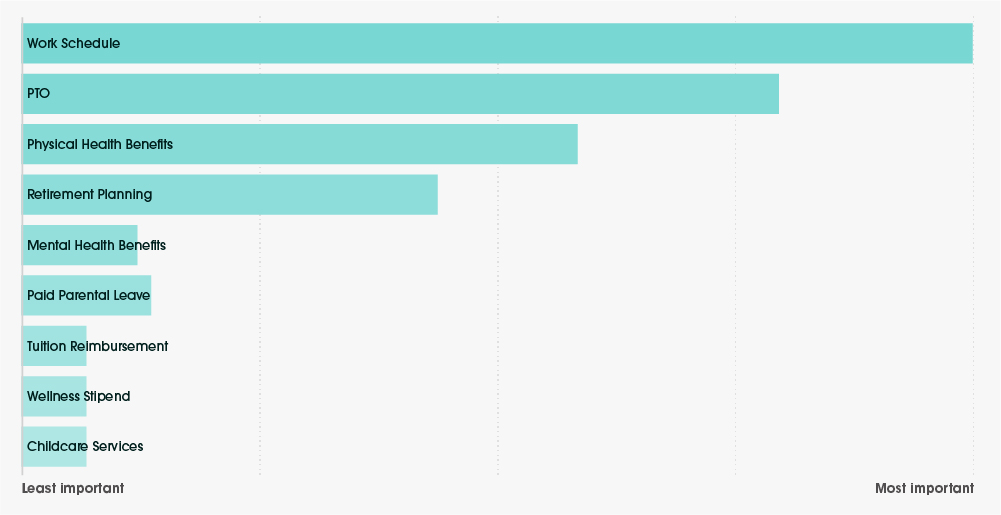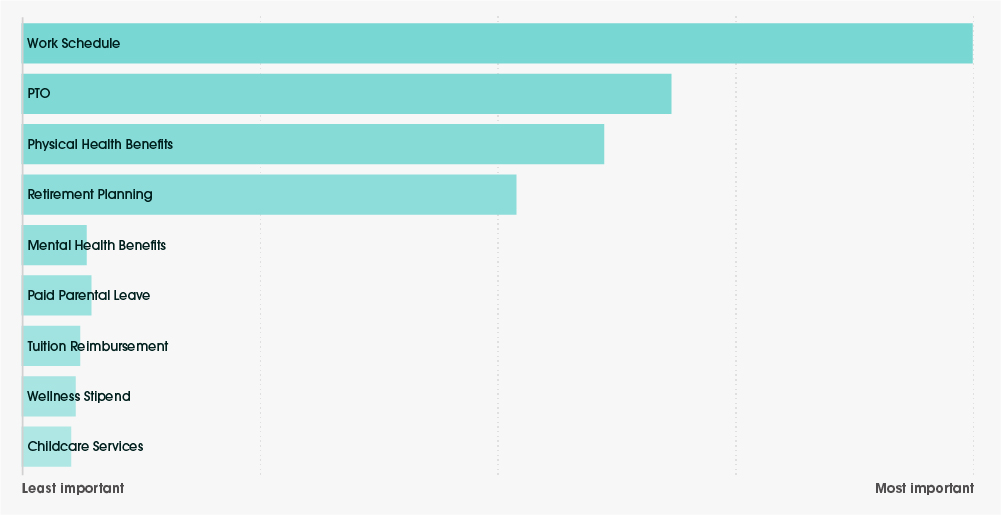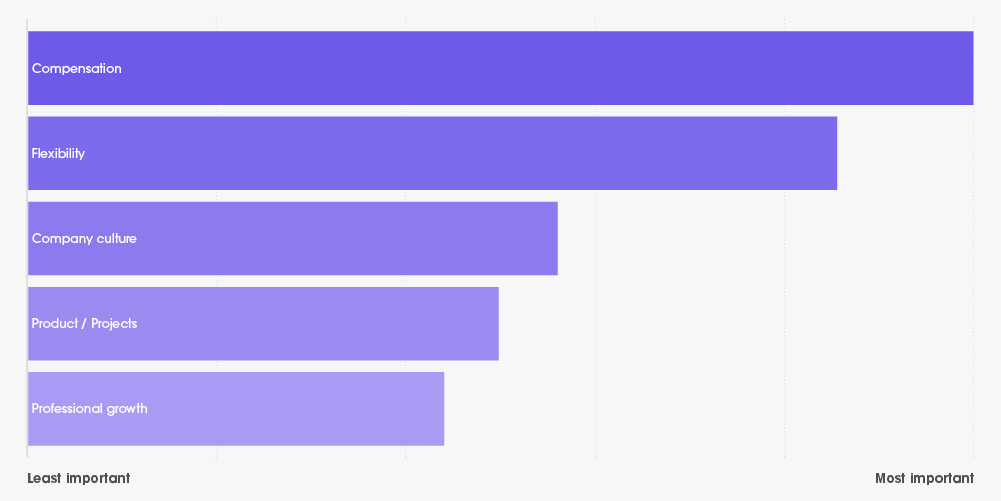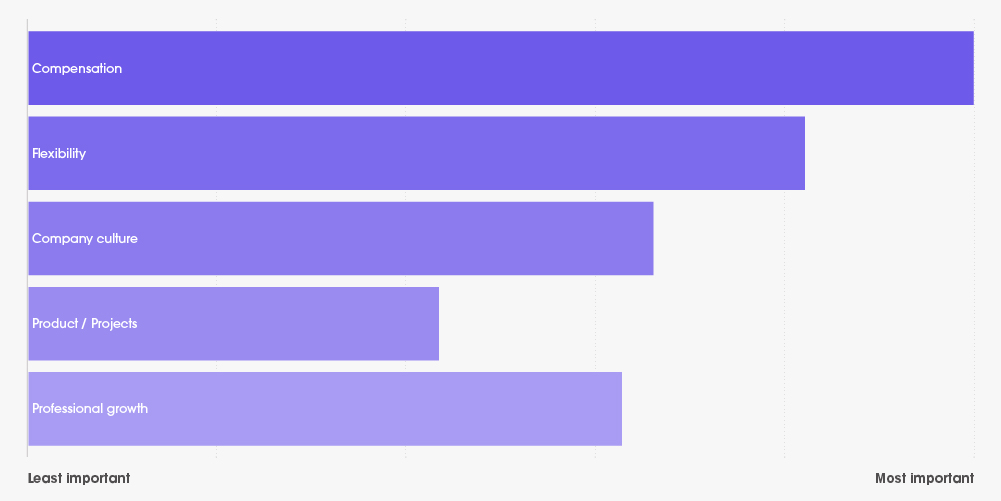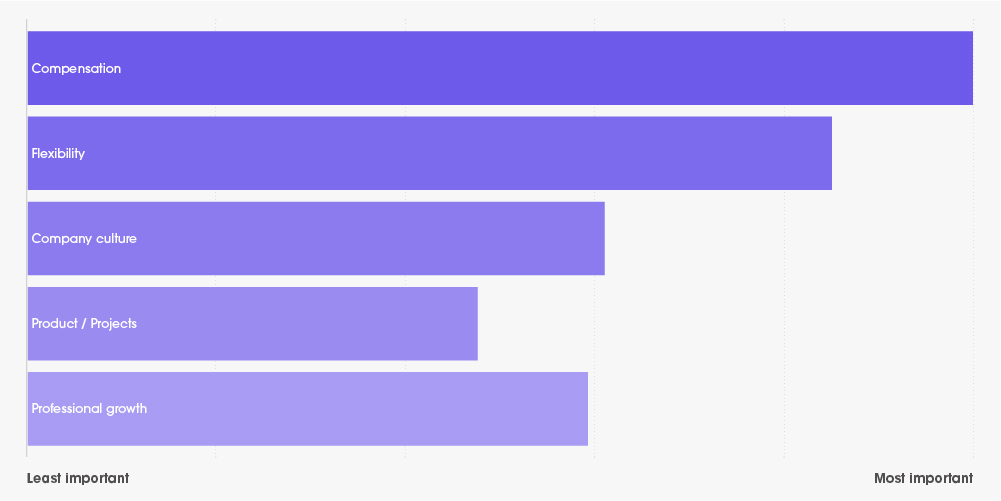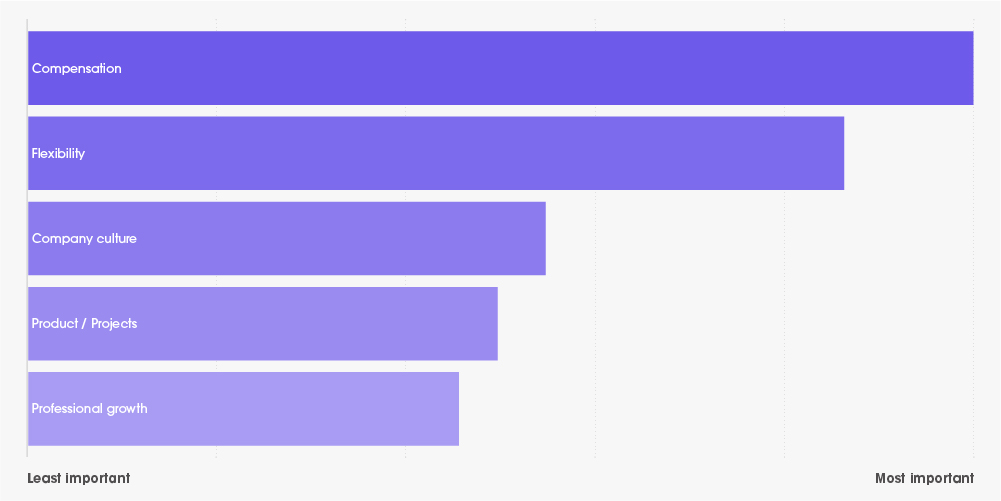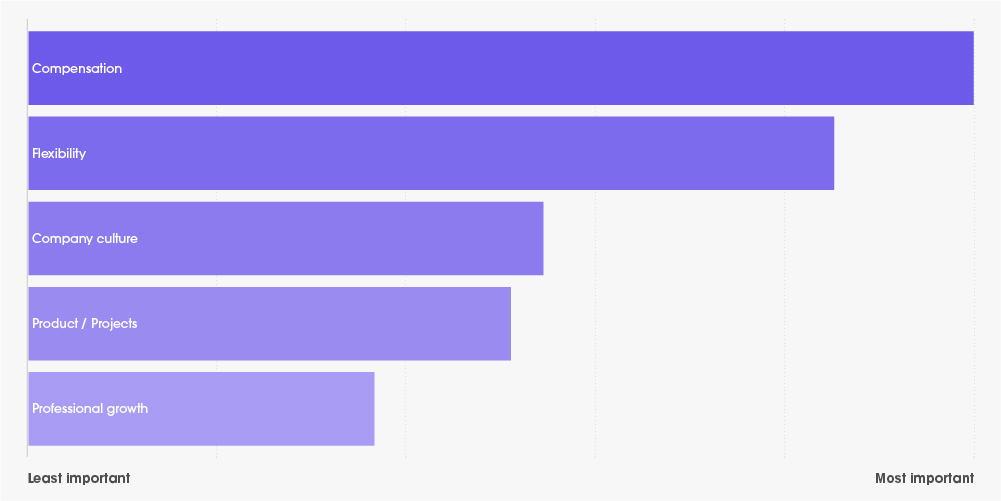Hiring in the Great Resignation
2021 State of Tech Salaries

Overview from Hired’s CEO
We’re in the middle of the Great Resignation where employees are quitting their jobs at record-setting rates. During the COVID-19 pandemic, many entered a period of reflection, reevaluating their career paths with newfound perspective. Some people vowed never to work from an office again, while others sought out better benefits and work-life balance.
This has led to high employee turnover and a spike in demand for top tech talent. In this fluid candidate job market, companies must rethink their recruiting and hiring strategies and reframe staffing challenges as opportunities for innovation. What benefits should they offer to attract and retain talent beyond competitive salaries? How should they restructure compensation plans, e.g. based on cost of living, as they shift to more flexible work models and hire across the globe? And finally, what matters most to employees when it comes to their careers and what are companies still missing or falling short of?
Companies can’t afford to sit back and expect talent to come to them – they need to take proactive steps to attract, employ, and retain top tech talent in this competitive market. In this year’s State of Salaries Report, we took a close look at Hired’s marketplace data to uncover how and why salaries have changed – specifically with the spike in remote work – since the beginning of 2020 and how demand for tech talent has shifted across different markets. We also gained valuable insights from over 1,200 tech employees to provide companies with answers to the above questions and guidance on how they can adapt to meet changing candidate preferences, revamp their hiring strategy, and thrive in the Great Resignation era.

Josh Brenner
CEO of Hired
Tech salary trends
Demand for tech talent remains at an all-time high amid Great Resignation, driving increased demand for junior and remote talent to fill roles faster than ever.
The hiring environment has become increasingly competitive after the effects of COVID-19 – which has led us into the Great Resignation era. Many employers are choosing to bring in less experienced candidates to fill high demand and invest in learning and development to continuously maintain their hiring pipeline.
With the demand for junior and remote roles increasing – specifically in tier 2 and tier 3 markets – salaries have overall shown a small decrease in the U.S. in 2021, compared to 2020. However, more experienced U.S. candidates (with 2+ years of experience), as well as talent in Canada and the U.K., continue to see tech salaries rise on average.
Location trends
Overall, remote work and hiring demand for tech talent remain at an all-time high. However, our data shows that more people are migrating out of big tech hubs into areas with lower cost of living. This has led to an increase in demand and interview requests in areas with lower cost of living.
As a result, employers are expanding their addressable candidate pool, filling roles faster and paying lower average salaries. While remote salaries are increasing overall compared to other markets, San Diego – a city that has become popular for remote work – has shown the highest remote increase.
Market trends
Interview trends
With the shift and demand for remote work, employers have been able to expand their talent pipelines, hiring across an increased number of markets and time zones.
Per our data, the number of different time zones and locations where employers have interviewed candidates for a given role has increased significantly since the start of the pandemic, with a spike in early 2021.
While in January 2020, for one open position, employers interviewed candidates across 2.2 different markets and 1.5 time zones on average, these numbers have increased to 3.4 markets and 1.8 time zones on average in June 2021.
The fact that the average number of time zones has increased much less than the number of markets companies have interviewed in could indicate that employers are still hesitant to go beyond their time zone when hiring remotely – with potential reasons being easier collaboration and communication.
Salary trends by years of experience
Salary trends by industry
For remote roles, we’ve seen a great amount of salary growth in the entertainment, fashion, and real estate industries, with a 34%, 17%, and 26% average salary increase respectively, between 2020 and July 2021.
For U.S.-based roles, there was a shift from biotech and consumer mobile industries – which were among the top 5 highest-paying industries in 2020 – towards enterprise, marketplace, and health as the ones offering the highest salaries in 2021.
For U.K.-based roles, the entertainment industry has seen the biggest salary growth, with a 17% increase in average salaries between 2020 and July 2021. Health is another highgrowth industry that has shown a 9% increase in salaries.
Salary trends by role
Salary expectations
Career plans
Access Hired’s real-time salary calculator
Stay up to date on current salaries across roles, levels of experience, and locations.
Time to hire
Companies are hiring faster to meet high demand for tech talent.
As a core part of our mission at Hired is to make hiring processes more efficient for both job seekers and employers, we’re happy to see that time-to-hire rates are at all time lows. U.S. companies in particular are moving incredibly efficiently to keep up with demand – they only take 30 days to fill an open role on average, compared to the global average of 32 days.
Cost of living
The shift to remote work begs the question: Where will my money go the furthest? Using San Francisco as a baseline for average salary and cost of living, we calculated how far your dollar will stretch in other major U.S. cities.
While major tech hubs like San Francisco and New York often offer higher salaries, this is offset by the high cost of rent, groceries, local taxes, and more. As a result, making the average $165k salary in San Francisco would be the equivalent of making $243k in Dallas. Only Washington D.C. and New York City top San Francisco’s steep cost of living.
Employee benefit preferences
Employees want other benefits — and are willing to trade them for a lower salary.
27% of tech employees would accept a lower base salary in exchange for stock in a publicly traded company – indicating that employees increasingly want to be a part of the business and its future growth and feel more connected to it.
Overall, the top three most compelling benefits tech employees ranked are 1) flexible work schedule, 2) paid time off, and 3) physical health, dental, and vision insurance/benefits – however, preferences vary based on employees’ years of experience. Younger, less experienced employees value tuition reimbursement, while more experienced tech professionals ranked childcare services and paid parental leave higher.
When evaluating a new opportunity, salary and compensation, flexibility and work-life balance, and company culture weigh most heavily in tech employees’ decision to accept the job.
Salary tradeoffs
Most compelling benefits
When looking at benefits preferences based on tech employees’ years of experience, we found some interesting differences to the overall results. Younger, less experienced employees ranked tuition reimbursement significantly higher, while more experienced tech professionals indicated that childcare services and paid parental leave are more important to them.
Weighing benefits and compensation
Read the full report and share with your team
Access our 2021 State of Salaries Report offline
Remote work trends
When remote work becomes just work
Remote and hybrid work have certainly become the new norm and established ways of working for the long-term. The majority of employees expect and want to have those flexible work options and be compensated fairly for it, meaning there shouldn’t be a pay decrease just because they are no longer in an office. However, there are mixed opinions about how to determine initial remote salaries – almost half of the tech employees surveyed disagree with using the cost of living of the employee’s location as a baseline.
Being in a candidate-driven market, we are seeing employers adjust to those new remote work demands to attract and retain talent, with over 90% moving to fully remote or hybrid models. When it comes to compensation and pay structures, companies need to be highly transparent to avoid frustration and turnover and ideally use their highest cost of living market as a baseline for all – making it possible for employees to truly work from anywhere.
Work from home trends
What is your current work situation?

What model for return to work do you prefer?

Does your current employer have plans to return to the office?

Salary expectations
Salary perks by years of experience
While overall, most tech employees don’t expect additional compensation to replace in-office perks, we found that the majority of those with less years of experience (0- 4 years) actually do want some form of compensation that is equal to traditional in-office perks – something employers should keep in mind when looking to attract and hire professionals for more junior roles.
Opportunities & next steps
To thrive in this competitive, candidate-driven market of the Great Resignation era and turn current staffing challenges into opportunities, employers need to leverage data-driven insights, upgrade their recruiting and hiring toolbox with modern solutions, revamp internal processes, and actively adapt to meet changing candidate preferences.
This will be key to not only accelerate the hiring process in this fast-paced market and fill roles faster but also to establish solid and successful talent acquisition strategies in the long term.
Here are four steps employers can start taking today to attract and hire top tech talent throughout the Great Resignation and beyond:
-
1. Promote salary transparency
Disclosing compensation and benefits in the hiring process and throughout the company are proven tactics for attracting and retaining top talent. Be transparent about your compensation structure across different locations and whether there are any adjustments based on cost of living for remote roles.
Since we found that 75% of employees would start looking for a new job if their salary were to decrease, it’s important to openly communicate how salaries are determined across roles to avoid turnover. Check out Hired’s salary calculator to find out what average salaries look like across different tech roles, levels of experience, and locations.
-
2. Offer the right benefits
With competition for tech talent at an all-time high, employers must adapt to meet changing expectations around work-life balance, remote work, DEI, professional growth opportunities, and other benefits. Surprisingly, 26% of employees would accept a lower base salary for equity or a performance-based bonus and 12% for remote flexibility, meaning companies need to re-prioritize and ensure that their teams feel connected to the business’ growth and success.
While salary is still an important consideration for employees, they also increasingly value flexibility and want to be in a company culture that aligns with their own values – however, preferences can vary between younger and more experienced employees. As you establish compelling benefits, make sure that those are communicated publicly and to potential candidates throughout the hiring process.
-
3. Provide flexible options for remote work
As we enter the post-COVID era, an astounding 62% of tech employees plan to look for a new opportunity in the next six months, which means companies need to proactively build warm talent pipelines to prepare for the possibility of turnover. The best way to source top talent – efficiently and effectively – is to look for candidates across the country and even globally.
This not only helps you build more diverse teams but also meets new demands for remote work we’ve uncovered in this report, ultimately helping attract and retain talent. In July 2021, we even saw that 93% of candidates on the Hired platform stated a remote preference – with 82% being open to remote work and 11% only wanting to work remotely. If you’re not offering remote or hybrid work options, you’re missing out on top talent.
-
4. Leverage data-driven hiring solutions
Overall, companies are hiring faster than ever before with an average of 30 days to hire – but this is not the case for everyone and most companies still struggle to fill open roles and keep up with demand. Data-driven hiring solutions, such as Hired, provide companies and HR teams with the most efficient and effective way to source and hire pre-vetted, skilled tech talent, tailored to their individual needs.
By providing access to engaged candidates, digital tools help increase candidate response rates and therefore speed-to-hire. The result is better hiring decisions, less manual work, and more time back for HR teams to focus on employer branding and other high-impact initiatives discussed above. Furthermore, solutions like Hired can help you leverage skill-based assessments to reduce bias in the hiring process and effectively source underrepresented candidates to meet your DEI and hiring goals.
Methodology
This report is based on Hired’s proprietary data from real job offers on the platform from companies to tech professionals, collected and analyzed by Hired’s data science team. For this report, we focused on tech talent in 21 markets, in addition to those working remotely, and analyzed more than 525,000 interview requests and 10,000 job offers facilitated through our marketplace from January 2019 through June 2021 (Q2 2021), including more than 17,000 participating companies and 180,000 job seekers.
Age and race data was collected through an optional demographics survey given to Hired candidates that is used only for aggregated research purposes and not shared with Hired clients.
Where numbers have been adjusted to reflect the cost of living in a certain market, we used data from the site Numbeo, which factors in things like rent and real estate prices, groceries, transportation, utilities, local taxes, and more.
In addition to our proprietary data, we collected survey responses from more than 1,200 tech professionals across the globe on the Hired platform to better understand how COVID-19 and the shift to remote or hybrid work has impacted their salary expectations, preference for benefits and flexible work, overall career plans, and more.
Terms and definitions
Offered salary as referenced throughout the report:
Salary specified by the employer at the time of the interview request
Market tiers, as referenced throughout the report:
The market tiers are assigned based on historical or expected activity on the Hired platform
Tier 1London, United Kingdom Tier 2Boston, United States |
Tier 3Atlanta, United States |
About Hired
Hired is the largest AI-driven marketplace that matches tech and sales talent with the world’s most innovative companies, including Instacart, Dropbox, Zendesk, Postmates, Twitch, Capital One, and Peloton.
Backed by the world’s leading talent advisory and solutions company, The Adecco Group, Hired combines intelligent job matching with unbiased career counseling to help people find a job they love and reach their full potential. By providing accurate, real-time information, access to equal opportunity, efficiency, and transparency, the Hired platform serves as the backbone for hiring managers, recruiters, and C-level executives to surface the best matching talent and build ambitious, diverse teams.
Hired is committed to building equity in the hiring process through a more representative talent pool, using diversity goals, customized assessments, and salary bias alerts to help remove unconscious bias when hiring. For more information, visit hired.com.
Looking for more insights?

Salary calculator
Access Hired’s real-time salary data across roles, levels of experience, and locations
Calculate salary



